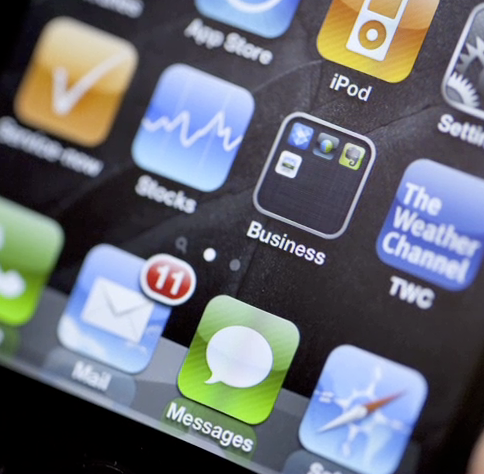Enterprises buying iPhones "in droves": Here's the tipping point

BlackBerrys are on their way out, and iPhones are ready to take their place in the enterprise space, according to the latest forecast report from research firm IDC.
Enterprises and large businesses are buying the petite Apple-branded shiny rectangles "in droves," the report said, and in the coming years will likely outshine its more popular rivals in the business smartphone space.
Android vs. iPhone in the enterprise space
The research firm differentiates between business-bought devices, so-called "corporate liable" -- from employee-bought devices, dubbed "employee liable" smartphones (think the ongoing bring-your-own-device, or "BYOD" trend).

IDC projects that by year-end 2012, consumer Android smartphone shipments will reach 351.8 million, with 87.7 million corporate liable devices and 15.1 million employee liable devices shipped. One-quarter of the devices are being snapped up by enterprises directly, with a separate 4.3 percent falling directly in the hands of BYOD business users.
But it's the iPhone that businesses want to look out for.
Looking ahead to 2016, the iPhone will reign over the business space with around 68.9 million shipments, while Android will dwindle due to its fragmented ecosystem, leaving "more gaps in security than many organizations are comfortable with," the report notes.
By contrast, Apple is forecast to ship 78.6 million iPhones to end consumers, with 37.1 million shipping to business workers and 31.1 million directly to companies.
Between Android and iPhones, the old favorite BlackBerry smartphone will be left out to pasture, despite topping the corporate liable smartphone shipments in 2011 with 22.4 million devices to companies.
While "BlackBerry continues to be the gold standard for security," said the report, its lack of appeal progress in the consumer and developer market "hinders its viability going forward."
When did the iPhone become so high and mighty?
This is the tipping point. BlackBerry is on its way out as the business and enterprise gold standard in security and functionality, and the iPhone is heading in.
At what point did the iPhone, in spite of its shiny consumer appeal, become a business-friendly and enterprise-ready device?
Read more
It probably was all along -- I personally failed to see it -- but the U.K. government is calling it out as the next-best thing since the sliced BlackBerry bread, by certifying it for government use. It's only a matter of time before other governments adopt the Apple smartphone as the 'government standard' device for low-level secrets.
In spite of BlackBerry's back-end infrastructure -- which is the reason behind the U.K. government's decision to classify as good-enough for low-level national security documents (the same level as the BlackBerry, funny how that happened), among others -- the iPhone's back-end policy management is what keeps it ticking over in the hearts and minds of IT support folk. It's highly adaptable to mobile device management (MDM) services and set IT policies, thanks to its tightly controlled in-built security features.
Following the U.K. government's move, a step up in size, Barclays picked out the iPad as the most suitable device for its 8,500 tablet rollout. In doing so, it sent a giant 'Bat-Signal' to the rest of the banking industry -- one famed for its secrecy and data protection rules -- to say, "hey, Apple's open for business -- literally."
In spite of its closed platform (which adds even more weight to the security argument), the iPhone solution is as good as good as the old BlackBerry platform, along with a range of other features that makes the iPhone attractive, such as better app delivery application.
If it's good enough for government, it's good enough for the wider world.